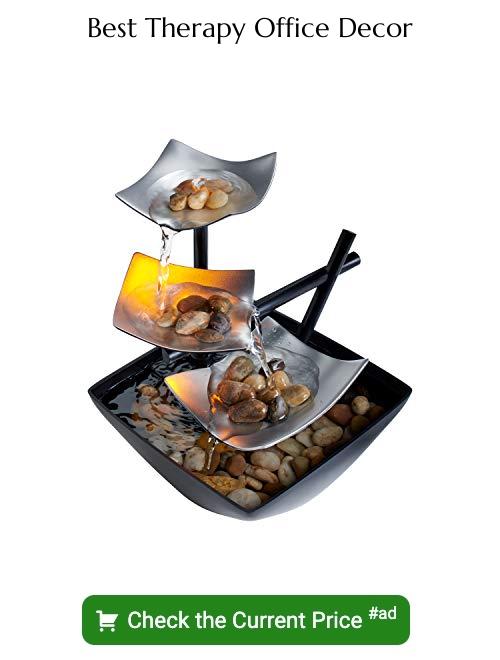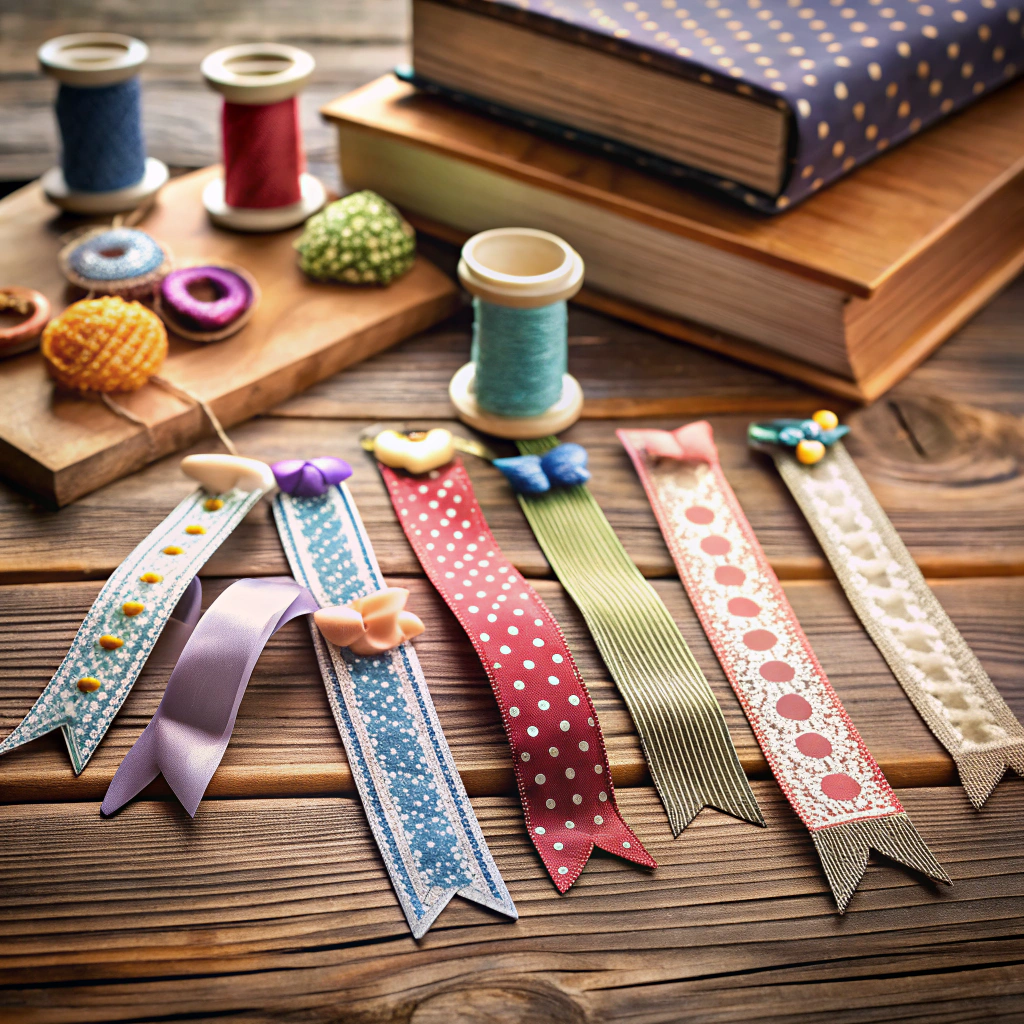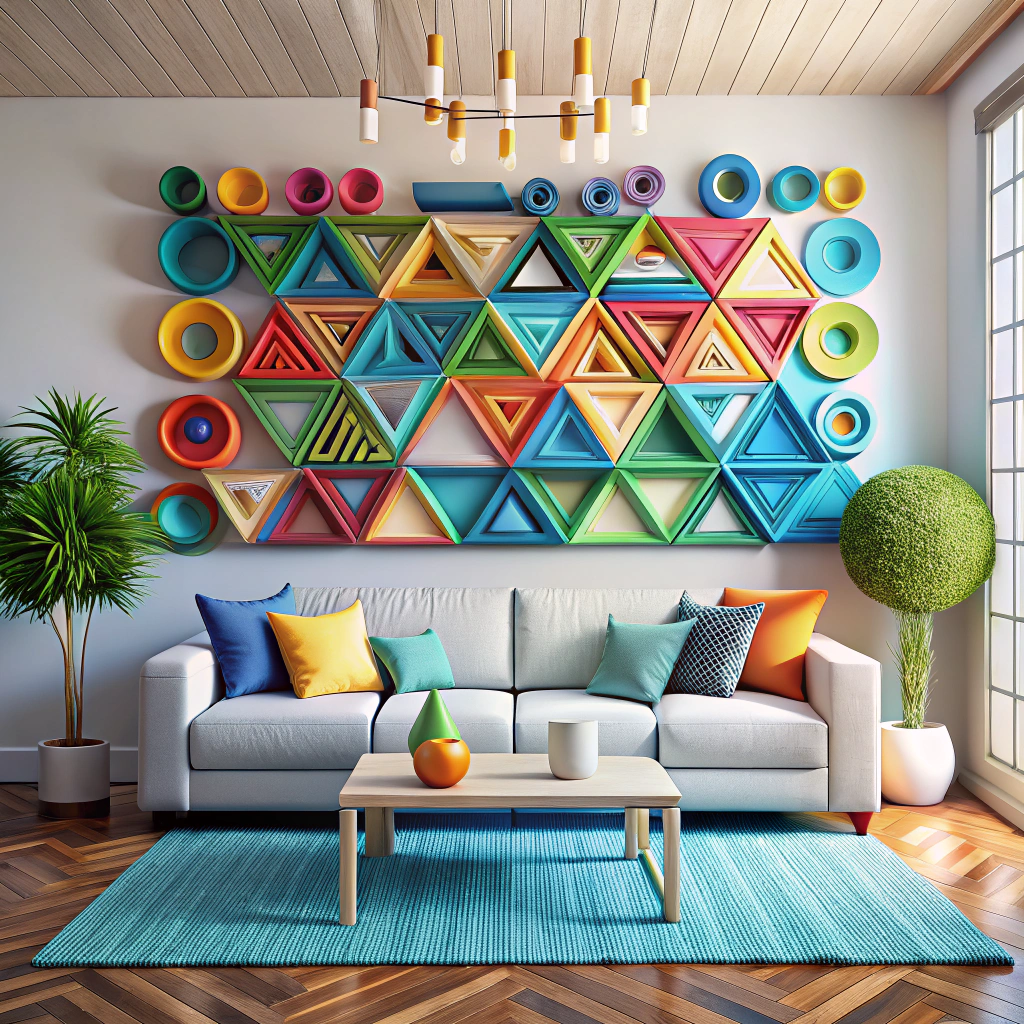Last updated on
Fueling the therapist-client rapport, therapy office decor is pivotal because it can significantly influence the comfort and openness of clients during sessions.
I’m honored to share with you my article on 20 Therapy Office Decor Ideas, complete with my own unique designs, hoping that you find it as inspiring and fun to explore as I did in creating them.
Creating a serene and inviting environment in a therapy office is crucial in promoting relaxation and openness for your clients. This piece will guide you through a variety of decor ideas that can transform your therapy office into a space of tranquility and comfort.
From calming color palettes and soft lighting to thoughtful artwork and comfortable furniture, these ideas will cater to all sensory experiences, ensuring your clients feel at ease from the moment they step in.
Dive in to discover the perfect blend of aesthetics and functionality that will make your therapy office a haven of healing and personal growth.
Calming Wall Colors, Like Cool Blues or Earthy Greens
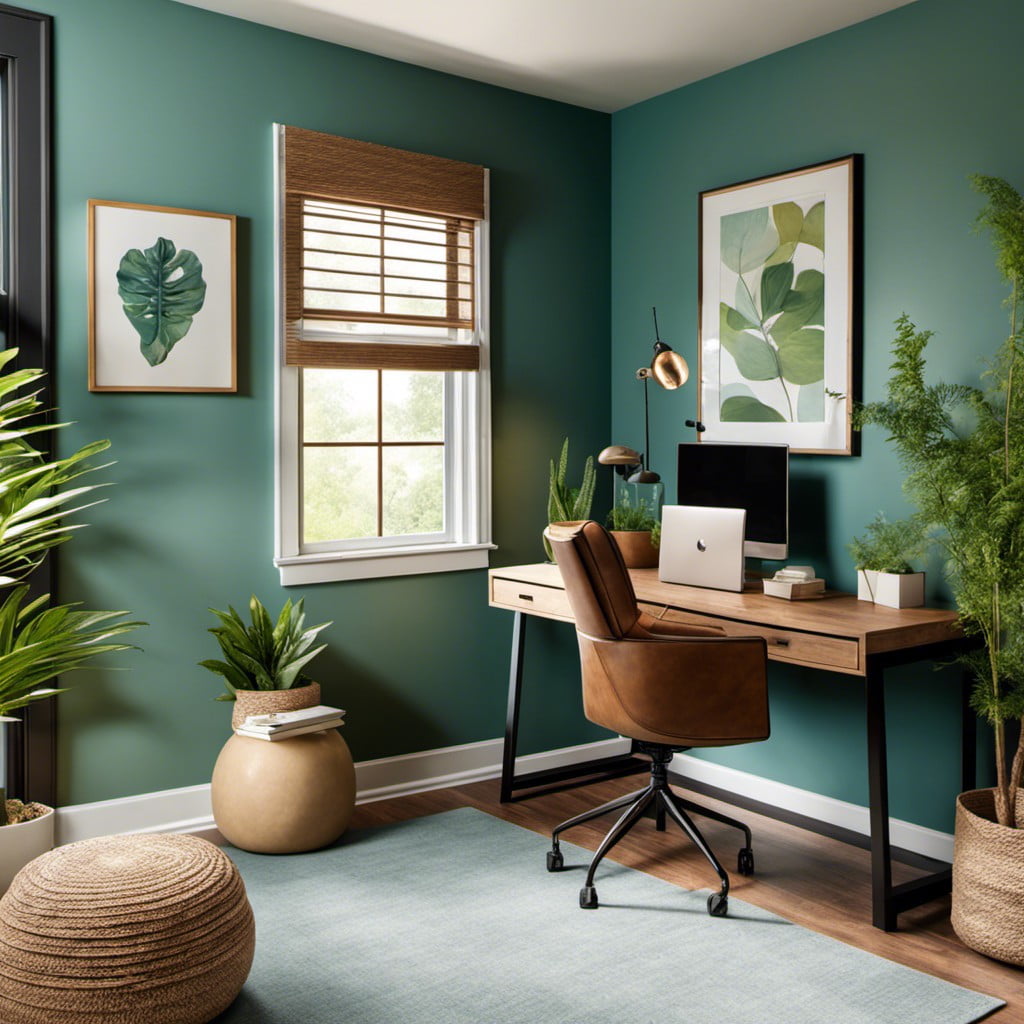
Cool blues and earthy greens serve as excellent palette choices due to their undeniably soothing properties. Studies suggest these hues can lower heart rate and blood pressure. They bring a sense of calm, much like the serenity one may feel while staring at a tranquil lake or into a lush, verdant forest.
When selecting a shade, consider variants with gray undertones to avoid overly bright reflections. Blue-greys or sage greens work exceptionally well. Textured or matte finishes help diffuse light, reducing any harsh glare.
Remember, the goal is to make the therapy office a sanctuary where stress levels reduce, enabling deep, meaningful conversations. Select a shade that reflects this, inviting tranquility and serenity into the space.
Comfortable Furniture With Plush Upholstery
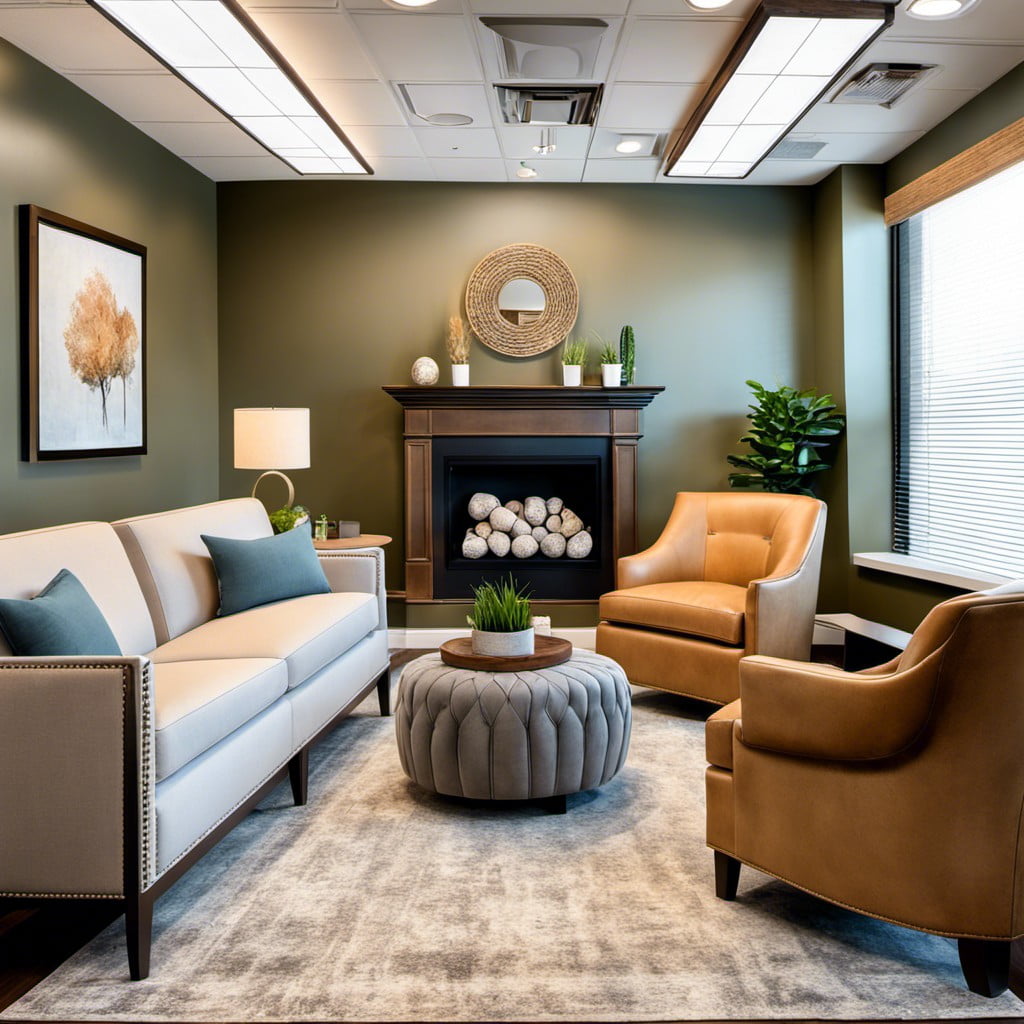
Selecting the right furniture pieces to enhance the comfort and serenity of your therapy office is essential. Choose plush, upholstered sofas or chairs that not only guarantee extended sitting comfort but also instil a sense of well-being. High-density foam cushions, feather filled pillows, and ergonomic designs can notably increase comfort.
Remember, physical comfort often eases mental tension, helping clients open up more during sessions. Utilise pieces with soft textures and soothing colours that promote tranquility. The furniture, sized proportionately to the office, should allow for easy movement around the room, ensuring the space does not feel cramped or overwhelming.
Finally, prioritise durability. Your furniture will see a lot of use, so it’s necessary to invest in robust pieces that will hold up in terms of both look and feel.
Framed Inspirational Quotes On Walls

Framed words of wisdom, motivation, and mindfulness heighten positive energy while setting the foundation for open conversations. They serve several purposes:
- Breaking Ice: Starting discussions around the encapsulated thoughts can serve as an effective ice-breaking activity.
- Focus on Wellness: Messages promoting positivity or mindfulness underscore the office’s focus on mental wellbeing.
- Personalized Environment: Tailoring these inscriptions to reflect your therapeutic approach fosters a personalized feel.
- Client Retention: Impactful sayings can leave lasting impressions, nurturing client engagement and improving retention.
Consider using a mix of popular quotes along with less familiar ones for variety. Diverse frame styles can also augment aesthetic appeal. Balance your walls with these meaningful decorations you can change periodically to keep the environment fresh and stimulating.
Indoor Plants for Tranquility
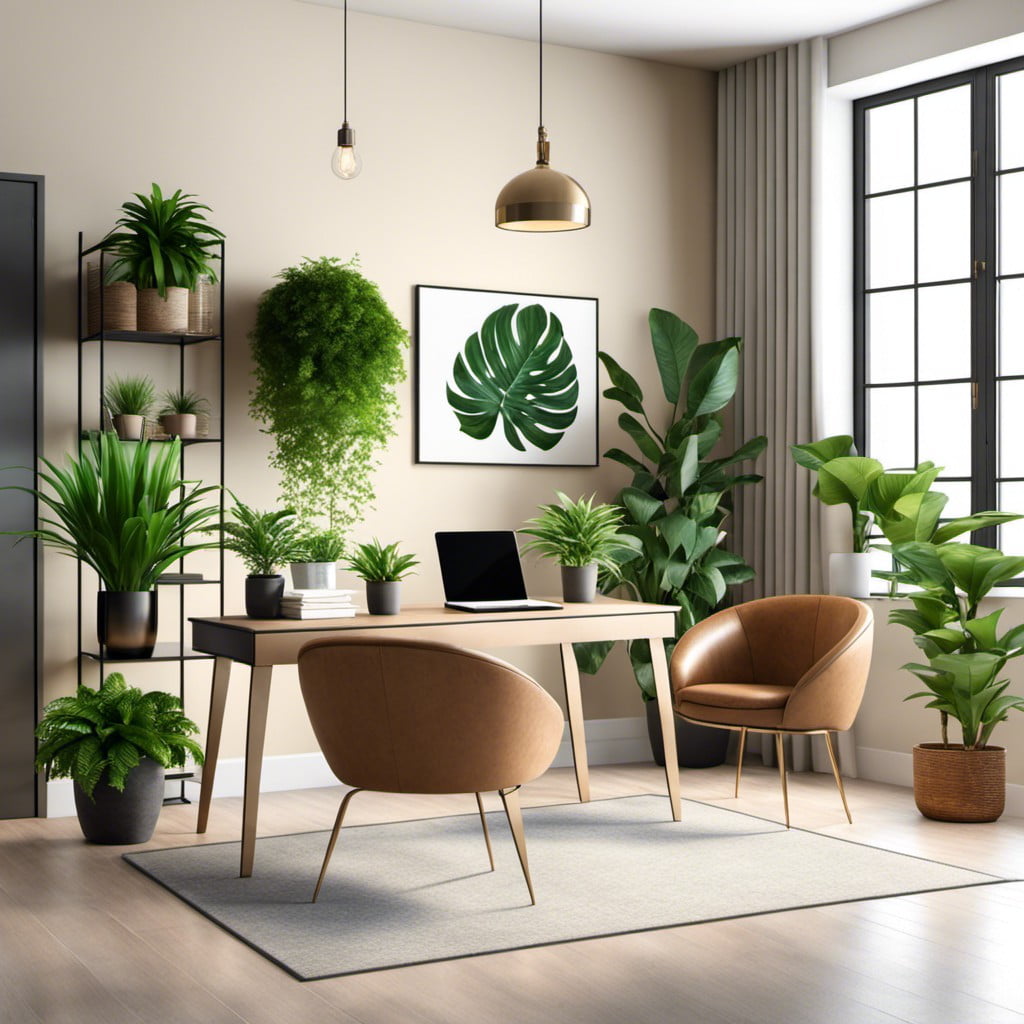
Incorporating greenery has a multitude of benefits beyond mere aesthetic appeal. Plants can significantly enhance the mood. Focusing on plants that are simple to maintain like snake plants, spider plants, or peace lilies can be an excellent choice. They can purify the air, by absorbing toxins, increasing humidity, and producing oxygen. This leads to improved well-being, sharper focus, and reduced stress levels.
Furthermore, plants can boost a sense of calmness and relaxation. For a unique touch, consider flora with soothing fragrances like lavender or jasmine. To personalize your space, pick interesting pots that reflect your style. However, remember to place them strategically so they don’t obstruct the flow of the room.
Essential Oil Diffuser for Calming Scents
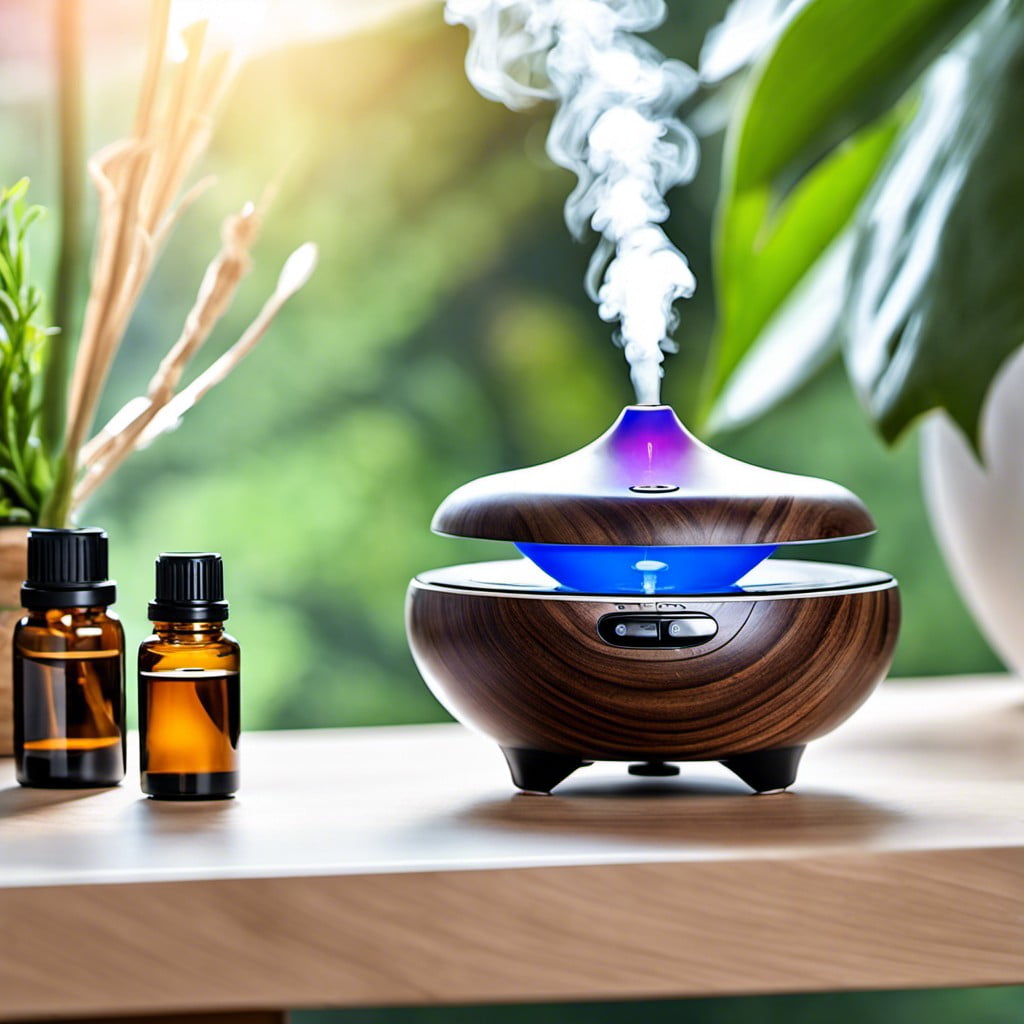
To create a peaceful atmosphere, incorporating calming scents into your therapy office can make a significant difference. Essential oil diffusers are a non-intrusive way of achieving this ambience.
Use lavender for its known relaxing properties, citrus to uplift, or peppermint to enhance focus and cognition.
The continuous mist maintains a steady infusion of soothing aroma, subtly enhancing the therapy session’s overall experience. Plus, with a compact size, they fit easily on a desktop or shelf, seamlessly blending into any decor style.
Just remember to select fragrance-free oils for clients with sensitivities.
Soft, Warm Lighting
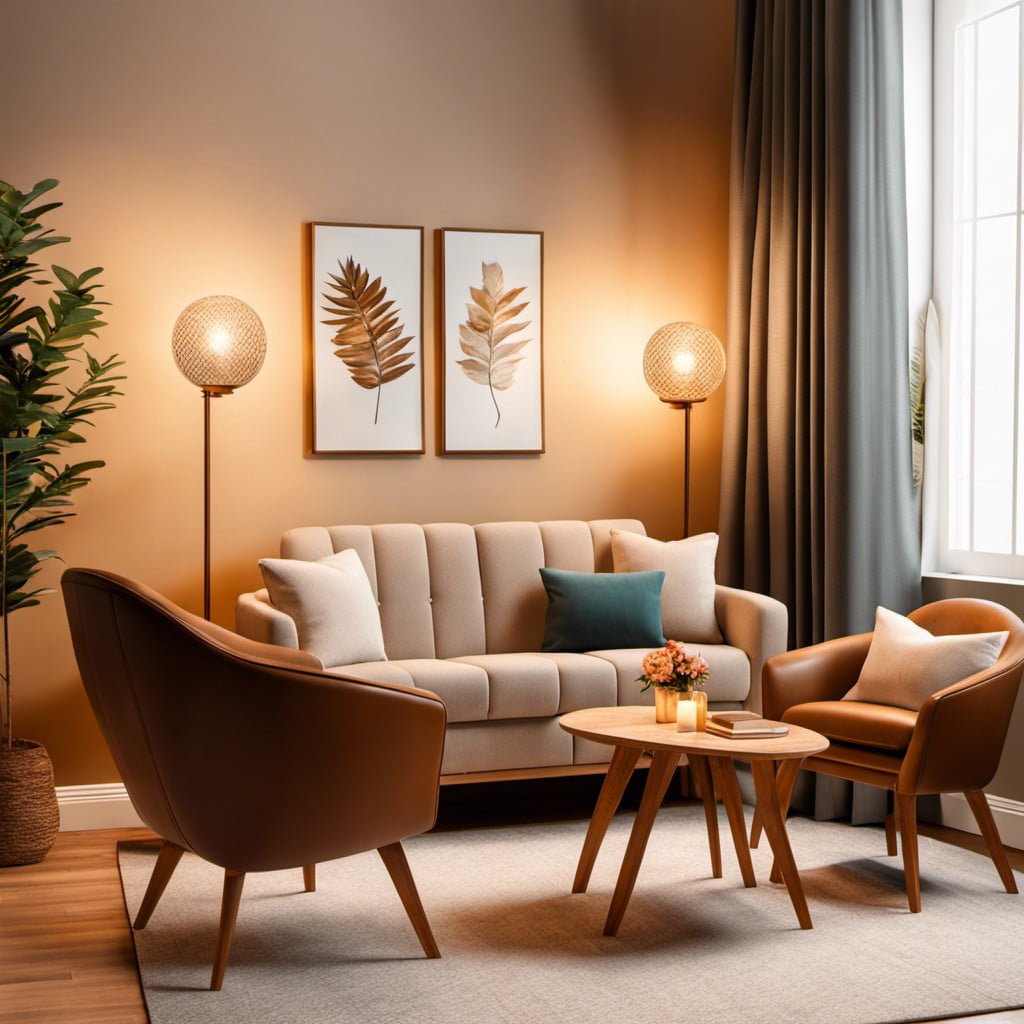
Ensuring that your therapy office promotes a soothing ambiance begins with the choice of lighting. Opt for adjustable fixtures that provide a soft glow as they simulate natural sunlight, which can help in reducing stress and anxiety levels.
Floor and table lamps with dimmers are excellent choices. Be mindful of the placement to avoid creating harsh shadows, and consider incorporating warm, low-intensity bulbs for a welcoming atmosphere. A salt lamp could add a unique aesthetic touch while releasing calming negative ions into the air.
Additionally, during daylight hours, make sure to allow plenty of natural light to enter the space, as it can uplift mood and enhance the overall feel of the room.
Comfy Floor Cushions for Relaxation Exercises
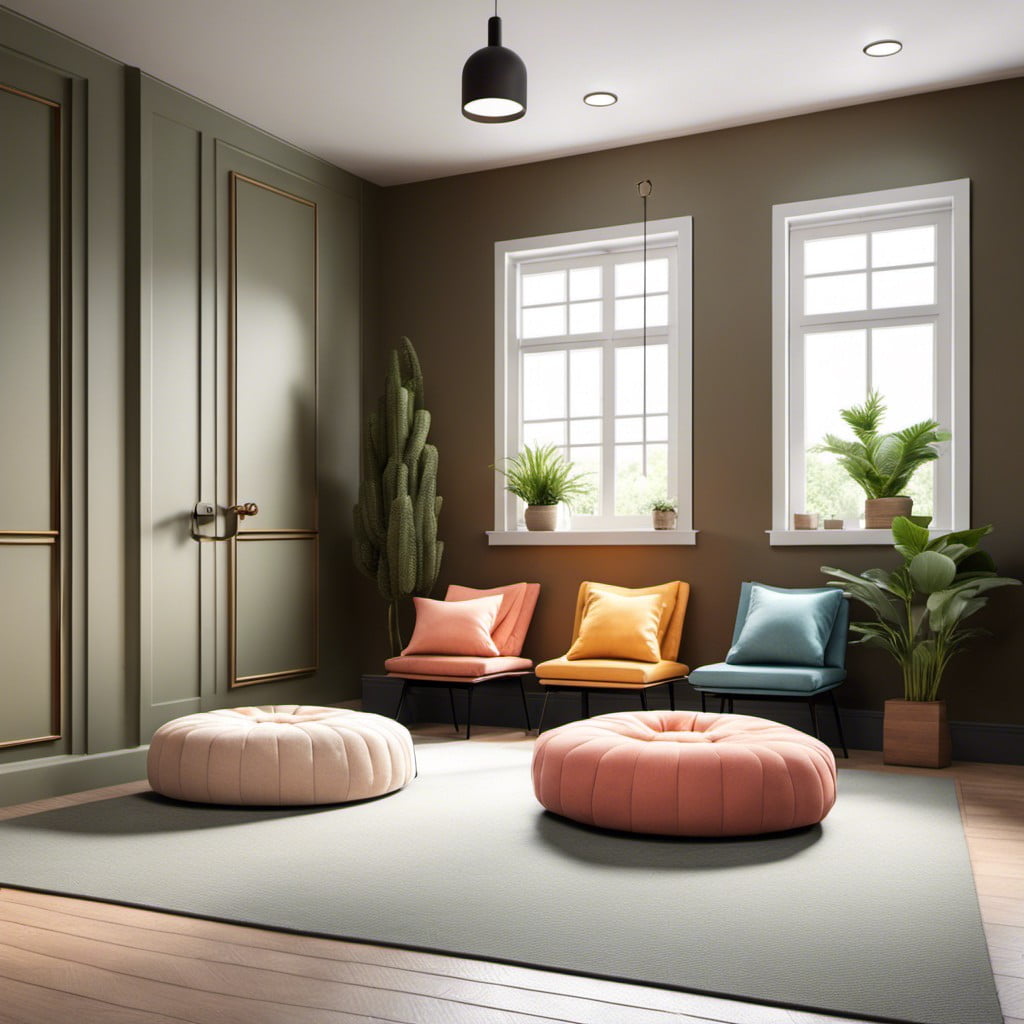
Selecting and positioning floor cushions correctly contributes to relaxation exercises that incorporate mindfulness or meditation. To achieve this:
1. Choose cushions of various sizes and shapes for versatility and accommodation of different sitting styles.
2. Consider filling material. Buckwheat hulls are firm yet adjustable, perfect for maintaining posture during prolonged sessions.
3. Opt for neutral or soothing colors that blend with the overall decor, promoting a harmonious environment.
4. Arrangement matters. Place them in a quiet corner, near natural light if possible, to establish a serene oasis within the office.
5. Consider a dedicated storage space to maintain an uncluttered workspace when not in use.
6. Lastly, always prioritize hygiene. Cushions with removable, washable covers keep your practice space fresh and inviting.
Minimalist Desk Design
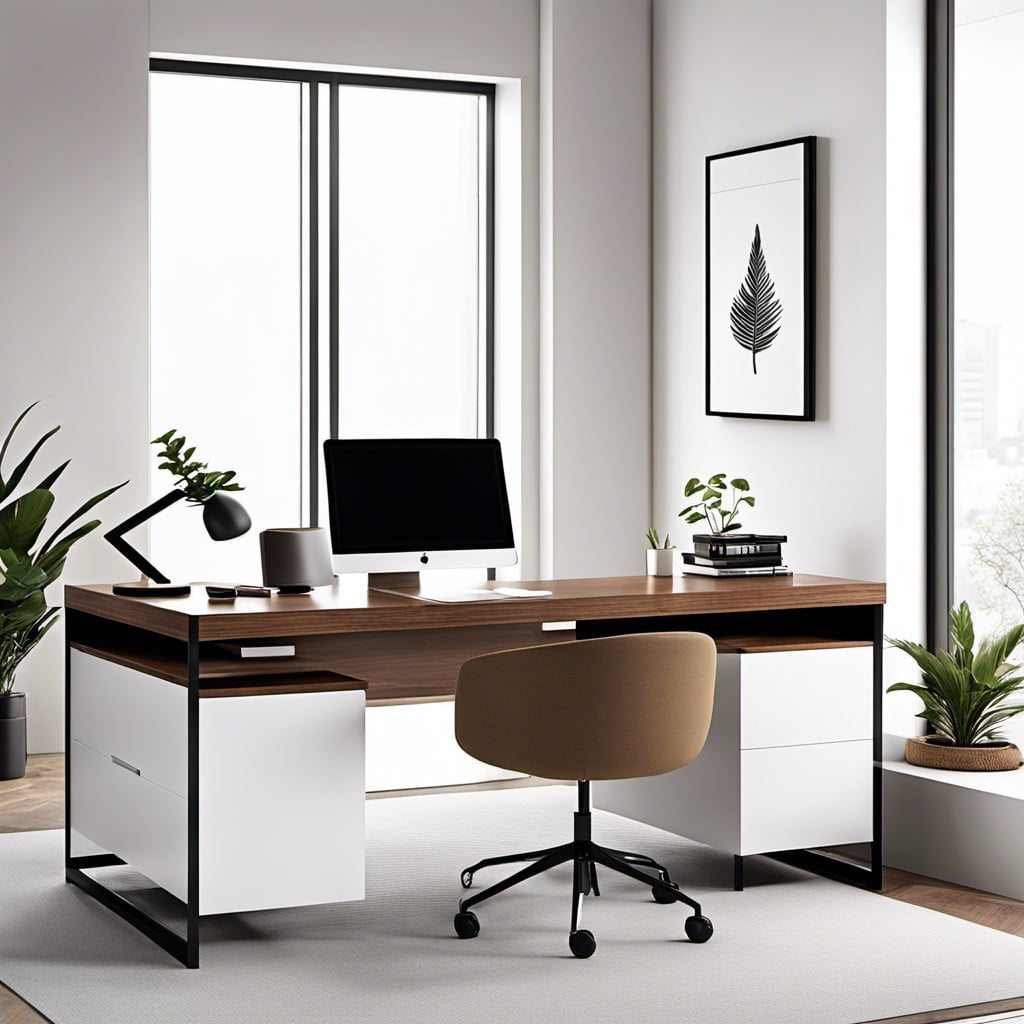
A well-constructed minimalist desk can amplify the functional yet calming energy you wish to convey. To accomplish this, choose a sleek, clutter-free design, preferably in neutral or muted colors to maintain the soothing aesthetic.
This largely involves keeping only the essentials on the desk. A laptop, a notebook, some pens, and perhaps a small desk plant would suffice. Avoid overloading with unnecessary items that cause visual chaos, as simplicity is key.
For storage, opt for built-in drawers or shelves that blend into the desk’s design. This would hide any potentially distracting items, while keeping them within arm’s reach.
Furthermore, consider using materials like wood or metal, which can tie into the overall decor theme of the office, strengthening the therapeutic ambience. Remember, the less clutter there is, the easier it is for the mind to focus, relax, and engage in the therapy process.
Cascade Wall Water Fountain for Soothing Sound
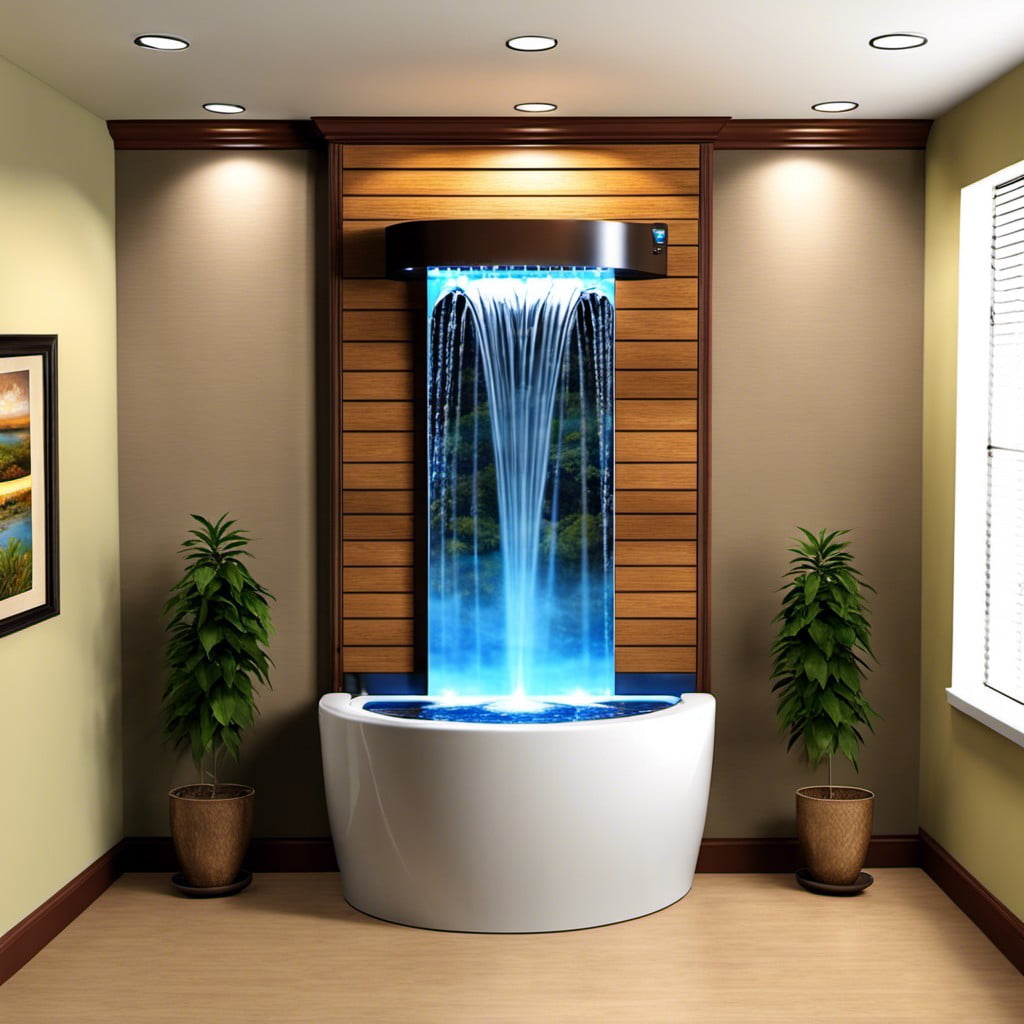
Incorporating a cascade wall water fountain in your therapy office can greatly enhance the ambience. The soft concluding sound of flowing water is known to have a soothing and calming effect, offering a sense of tranquility to the office occupants, and especially to those experiencing stress or anxiety. It’s a natural white noise generator to mask unnecessary sound distractions, enabling a client to focus on the therapy session with improved concentration.
Additionally, water fountains can serve as visual stimuli, their movement providing a sense of serenity. The continuous rhythm acts as a visual metaphor for the flow of life, subtly infusing positive energy into the therapy process. Furthermore, these fountains require minimal maintenance efforts, requiring only occasional water-level checks and cleaning.
When selecting a water fountain, consider its size, design, and the sound it produces. The fountain should seamlessly blend into the overall design scheme of the office, rather than standing out as an odd addition. Consider smaller, sleek designs with subtle lighting for a modern look, or a nature-inspired design if your overall decor leans towards warm and earthy. Just remember – it’s all about creating a safe, soothing environment for therapeutic growth.
A Bookcase With Assorted Psychology and Wellness Literature
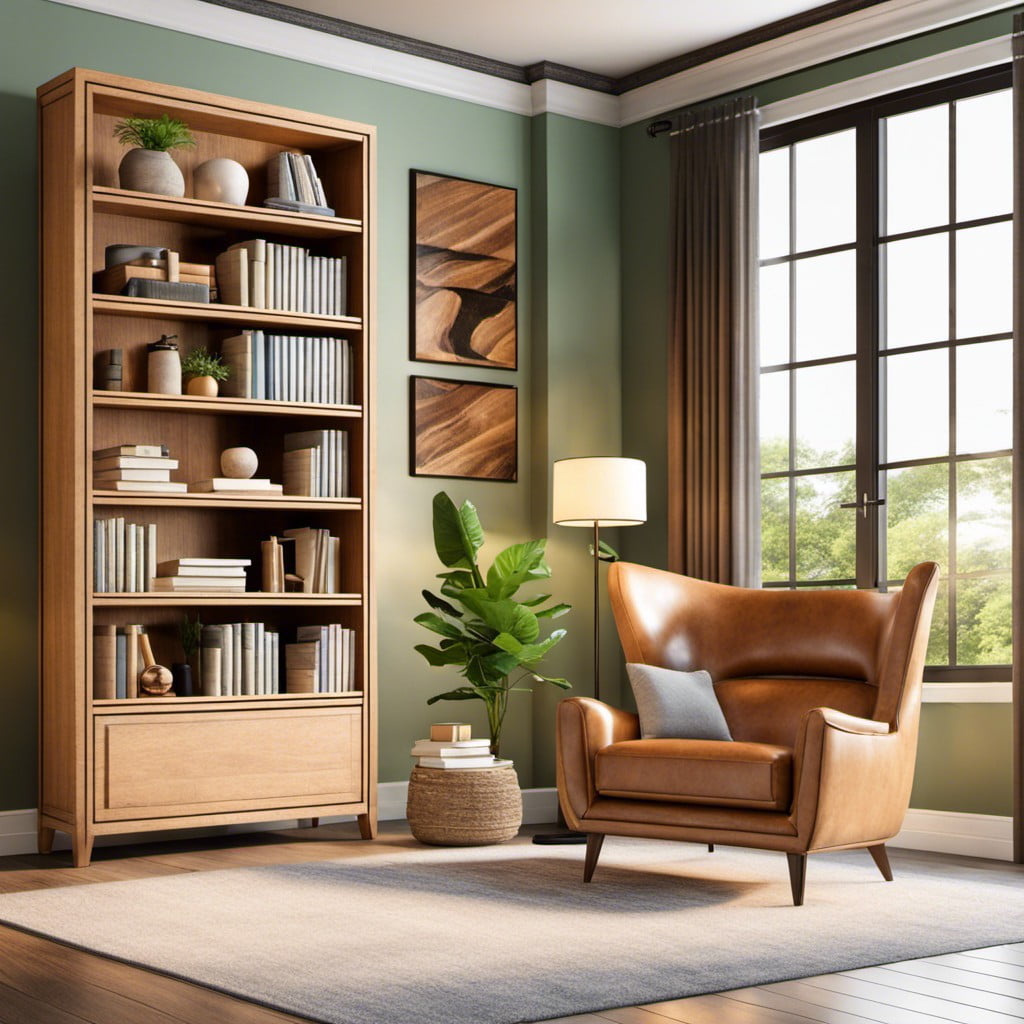
Having an array of diverse, informative books not only shows your expertise in your field, but also offers clients a resource for personal education and growth.
A well-curated bookshelf can indirectly communicate empathy and understanding, as it hints at your broad knowledge and readiness to approach any situation.
Choose titles that discuss different aspects of mental health, coping mechanisms, and self-improvement techniques.
It’s wise to consider books with varying degrees of depth, from introductory overviews to comprehensive studies.
This helps cater to your clients’ differing interests and needs.
Remember to frequently update your collection to include the latest publications and discoveries in the field.
Always ensure the books are accessible, inviting clients to browse or borrow.
Soundproofing to Maintain Privacy
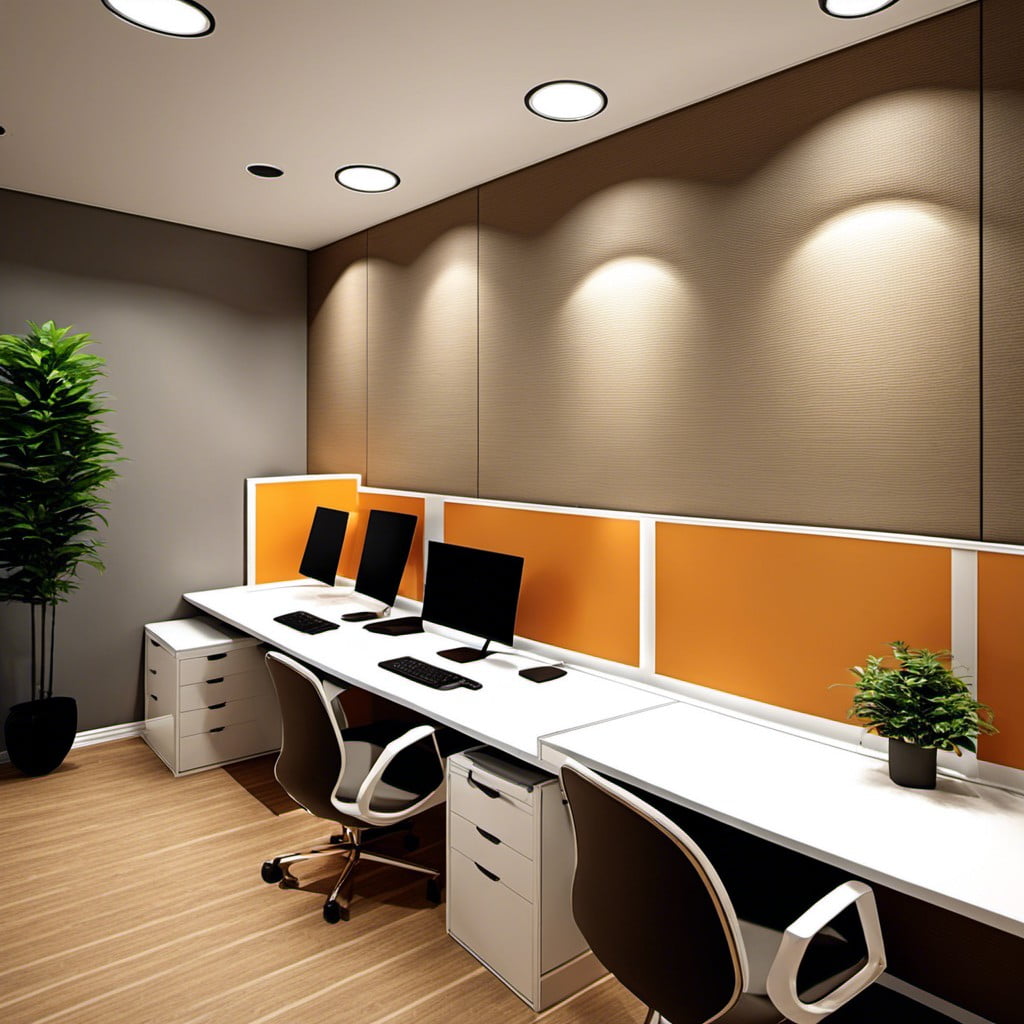
Proper soundproofing can contribute greatly to creating a confidential and peaceful environment in a therapy office. Strategic installation of acoustic panels, for instance, can significantly minimize ambient noise and create a more private atmosphere.
These panels, coming in various designs, not only serve a functional purpose, but can also be part of the aesthetic appeal. Soundproofing curtains or drapes can assist in limiting outside noise, offering dual benefits of controlling light and sound.
Thick carpets or rugs also help absorb sound, making the therapy sessions more contained and undisturbed. Careful selection of soundproof materials not only ensures an ideal therapeutic environment but also enhances the sense of safety and security for the clients.
Remember, discretion is an absolute must in therapy, and what better way to uphold it than by guaranteeing an acoustically insulated space.
A Small Zen Garden On the Countertop
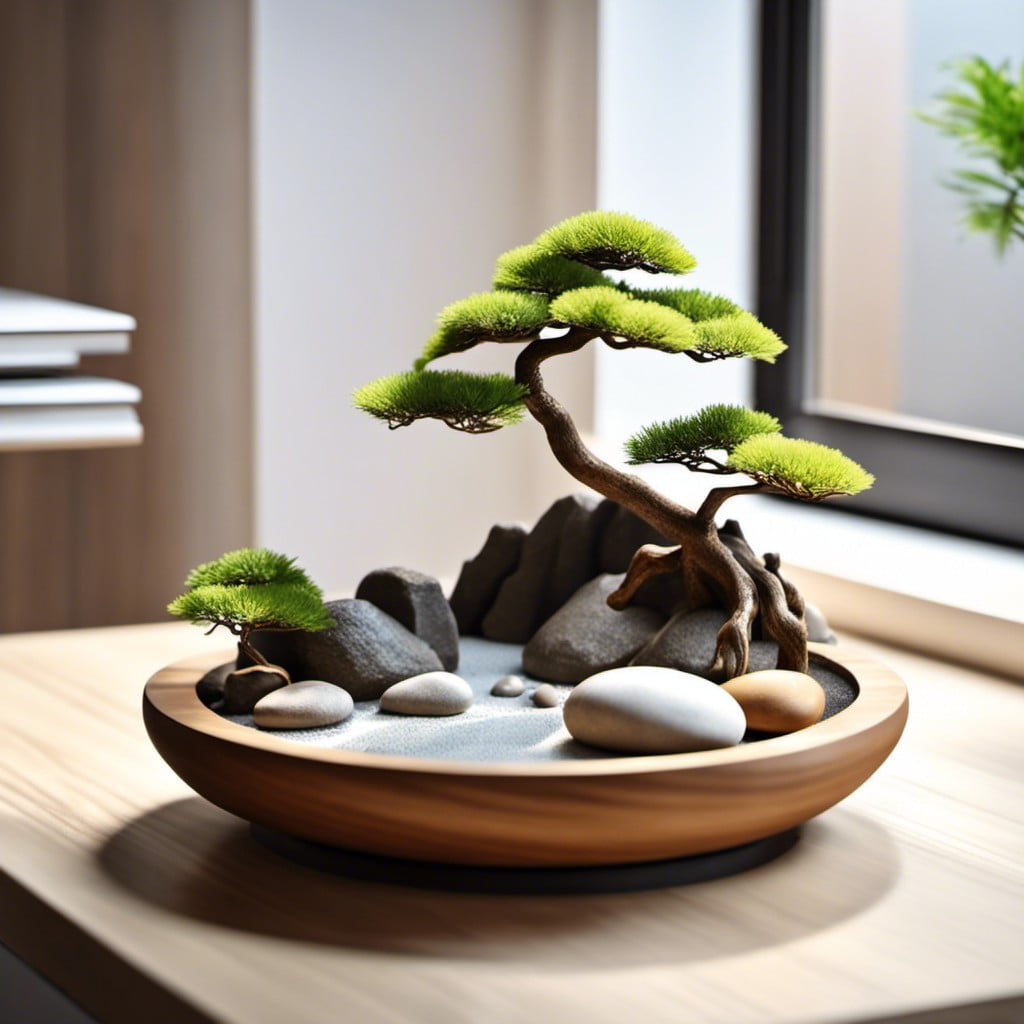
A tiny sanctuary of peace, a mini Zen garden brings tranquility through its simplicity. Seeing raked sand or small stones, you may feel drawn into a meditative state, conducive for introspection and meaningful conversations.
These gardens require minimal care, typically consisting of sand, stone, and a small rake. The act of raking the sand into patterns can be a relaxing activity for waiting clients. It demonstrates the act of creating order from chaos and provides a symbolic representation of water’s ebb and flow, making it not just a decorative piece, but a tool for mindfulness.
For some extra visual appeal, you can add a bonsai tree or a miniature Buddha statue. Moreover, as this garden occupies little space, it fits perfectly on most office countertops without creating unnecessary clutter.
Abstract Art for Insightful Thinking
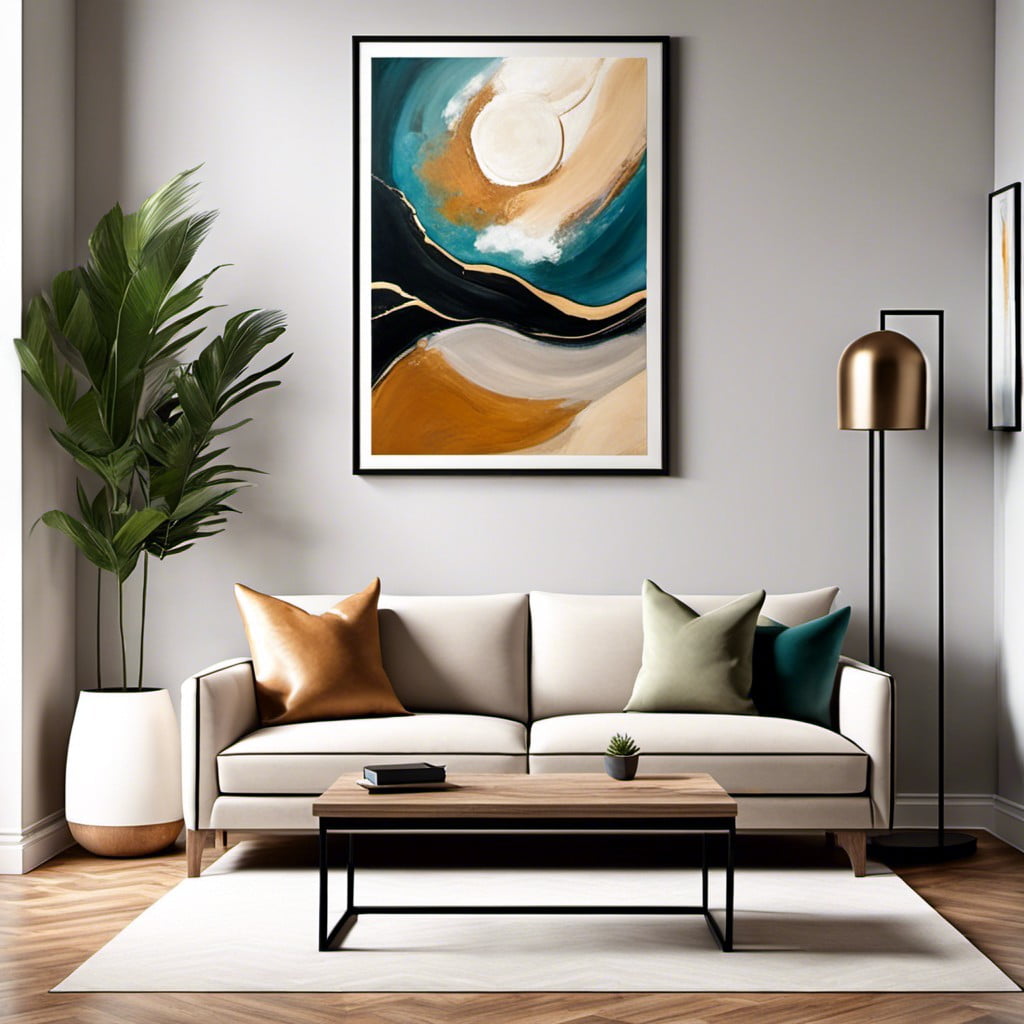
Displaying abstract art in a therapy office serves multiple purposes. It induces a relaxing and creative atmosphere, stimulating thoughtful conversations between the therapist and client. It does so through the interpretations offered by the ambiguity and symbolism inherent in abstract art pieces.
Rorschach prints, famous for their use in psychological tests, present a great option. Their random patterns provoke creativity and engage viewers in a personal interpretation, revealing subjective insights.
Other forms of abstract art, like non-representational paintings, sculpture, or even installations, bring color, texture, and form into the room. These pieces can act as visual stimulants, igniting the imagination, and promoting contemplation and introspective thoughts.
Remember to opt for art pieces with soothing colors and gentle forms to complement the overall ambiance of tranquility in the therapy office.
Clinic Name Signage With Elegant Fonts
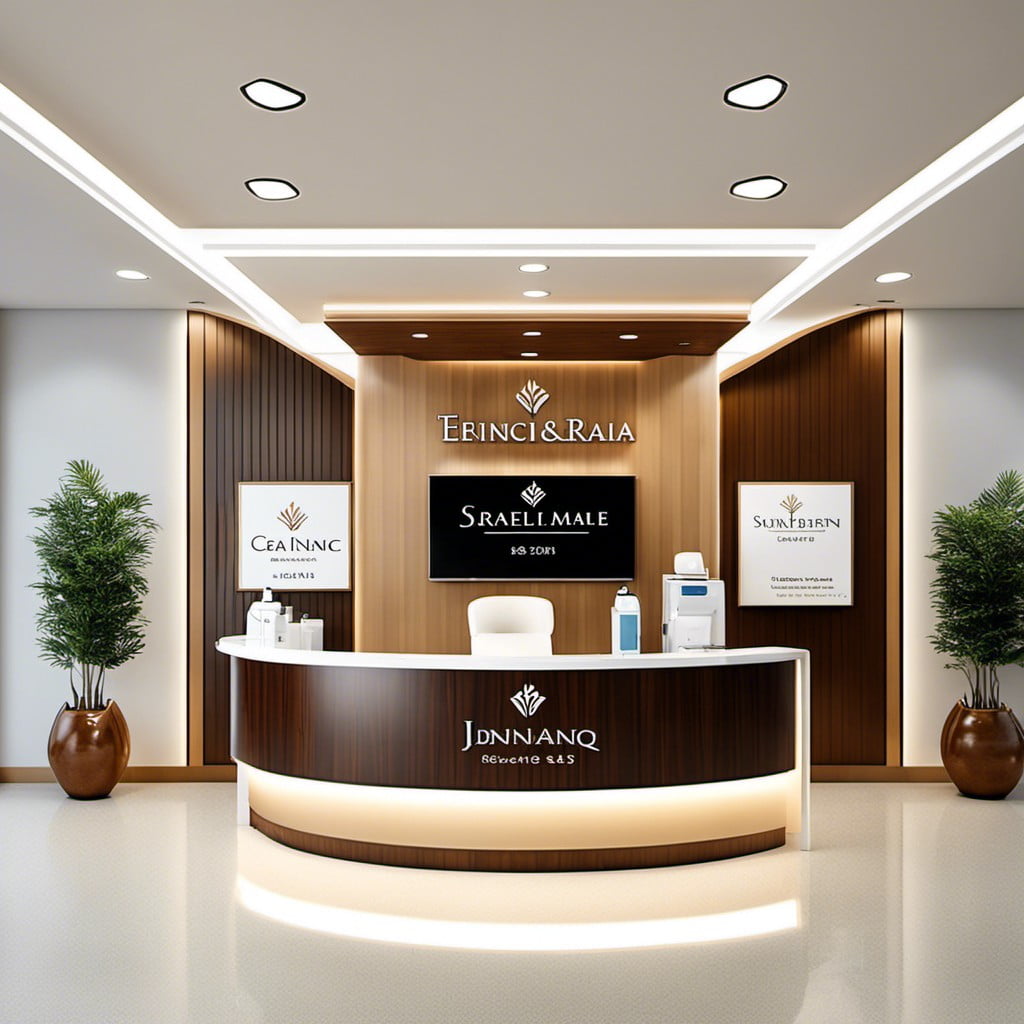
Choosing the right typography for your clinic’s name signage is fundamental. This non-verbal communication plays a significant role in the clinic’s atmosphere, subliminally affecting clients’ perception and their overall experience.
A soft cursive or sleek modern font can indicate a warm, welcoming environment. It’s advisable to avoid fonts that are ornate or hard to read, as they may send an unintended message of complexity.
The use of warm, soft colors that align with the soothing color palette of the clinic further enhances the calming ambiance. Position the signage strategically, possibly at the reception area, to draw immediate attention and establish the tone from the outset.
Keep the signage size in proportion with the room, too large may seem dominating, too small might cause it to be overlooked. Remember, the aim is to subtly assert the clinic’s identity and ambiance, not overpower the senses.
Throw Rugs for a Homey Feel
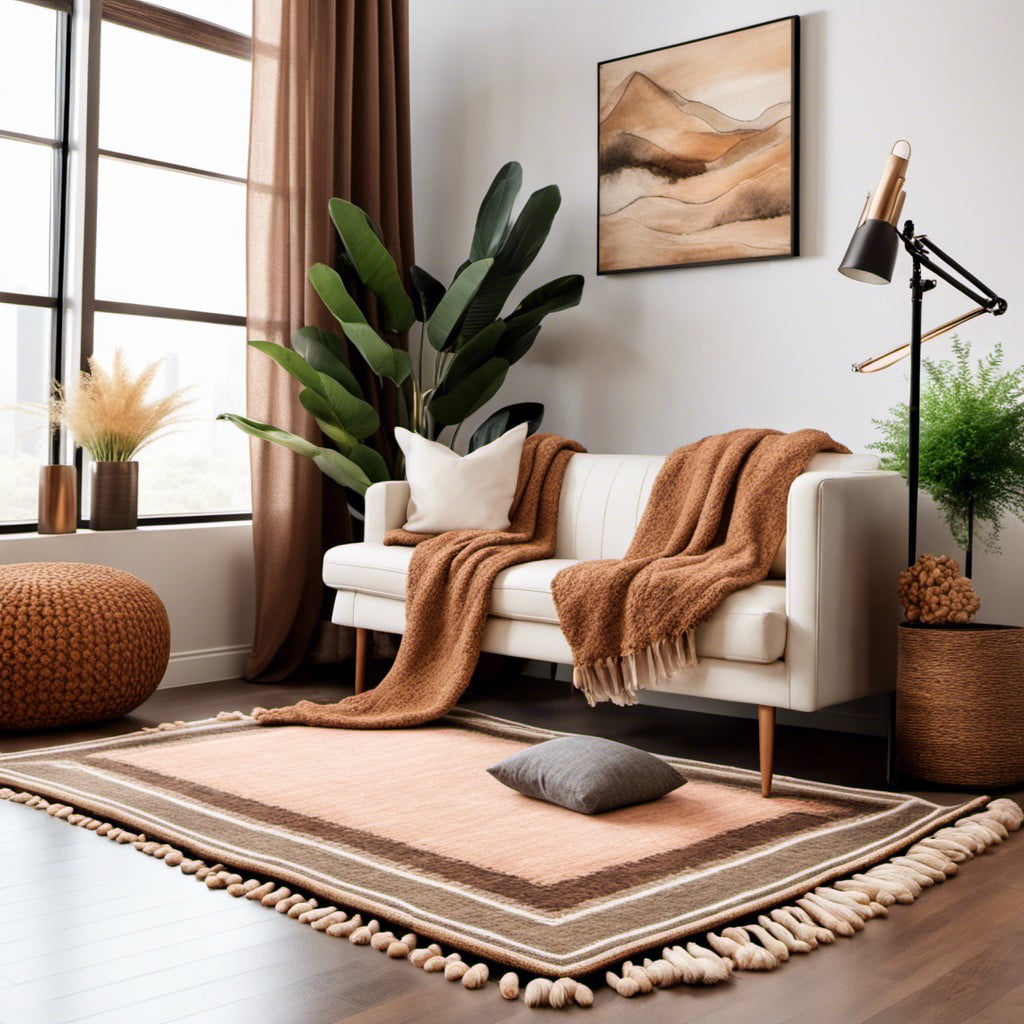
By introducing throw rugs, you can easily create a warm and inviting atmosphere. These versatile décor items, with their various shapes, sizes, and textures, can add an intriguing aesthetic depth to any room.
For a peaceful ambience, choose rugs in harmonious, muted tones. But, if you prefer a vibrant spark, opt for rugs with a pop of color or an intricate pattern.
Always ensure rugs are non-slip to maintain safety. Pair them with quiet corners, seats, or coffee tables to effortlessly lead clients, with their eyes and feet, to comfortable restful areas.
Coffee or Tea Station for Comforting Warmth
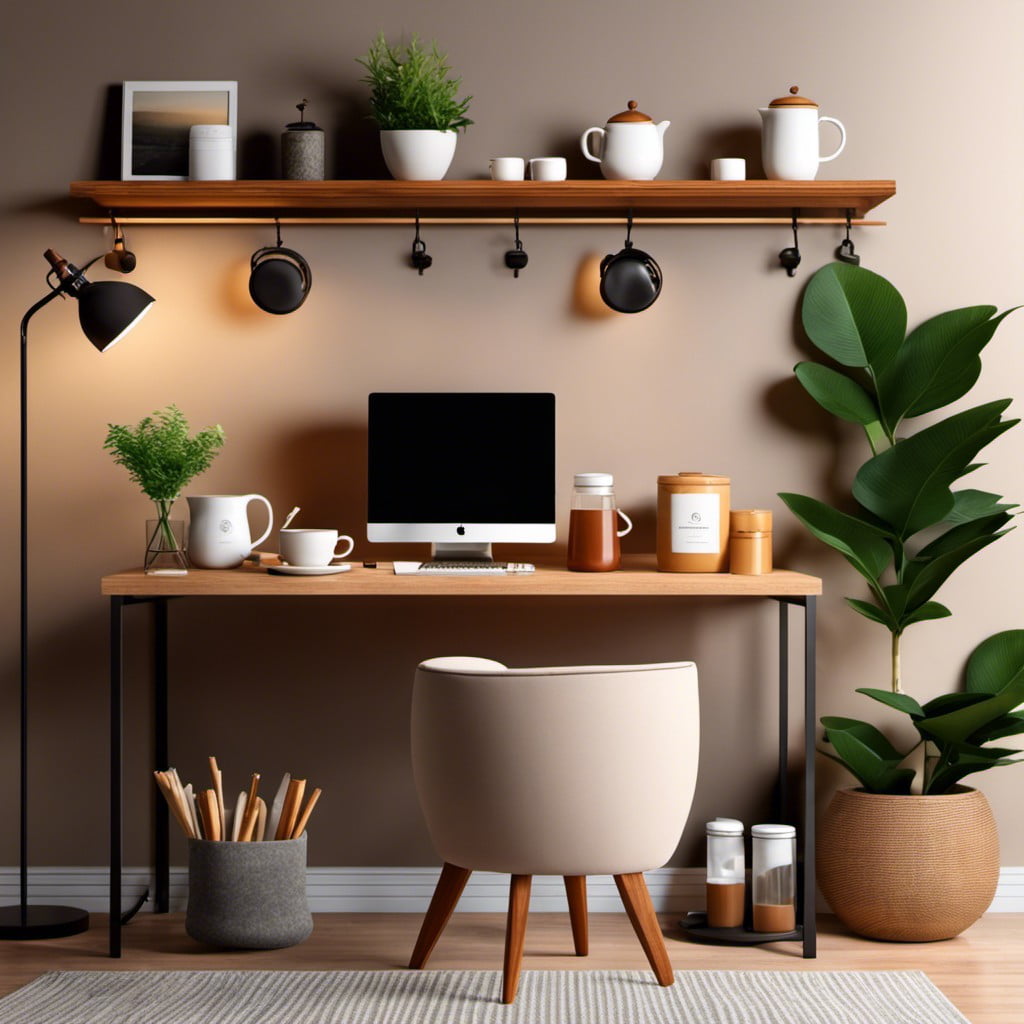
Considering its place in our daily life, having a small coffee or tea station is a gem of an upgrade. It encourages a comforting and familiar atmosphere, allowing clients to relax and aiding the therapeutic process.
1. Choose a designated corner: Pick a well-lit, welcoming corner where clients can help themselves to their preferred warmth in a cup.
2. Equip appropriately: Stock it with a kettle or coffee maker, coffee, an assortment of teas, cups, sugar, and creamer.
3. Keep it stocked: Stay consistent with replenishing to sustain the comforting environment. Clients’ preferences may vary, so offer a range of options.
4. Cleanliness is key: Regularly maintain the station’s cleanliness. A well-kept space signifies care and professionalism, which clients will appreciate.
Incorporate details like a tray for the cups, or a small pot with a bit of greenery to inject personality into your space. These seemingly small elements can contribute significantly to the overall warmth and tranquility of your therapy office.
Noise-cancelling Headphones for Deep Relaxation
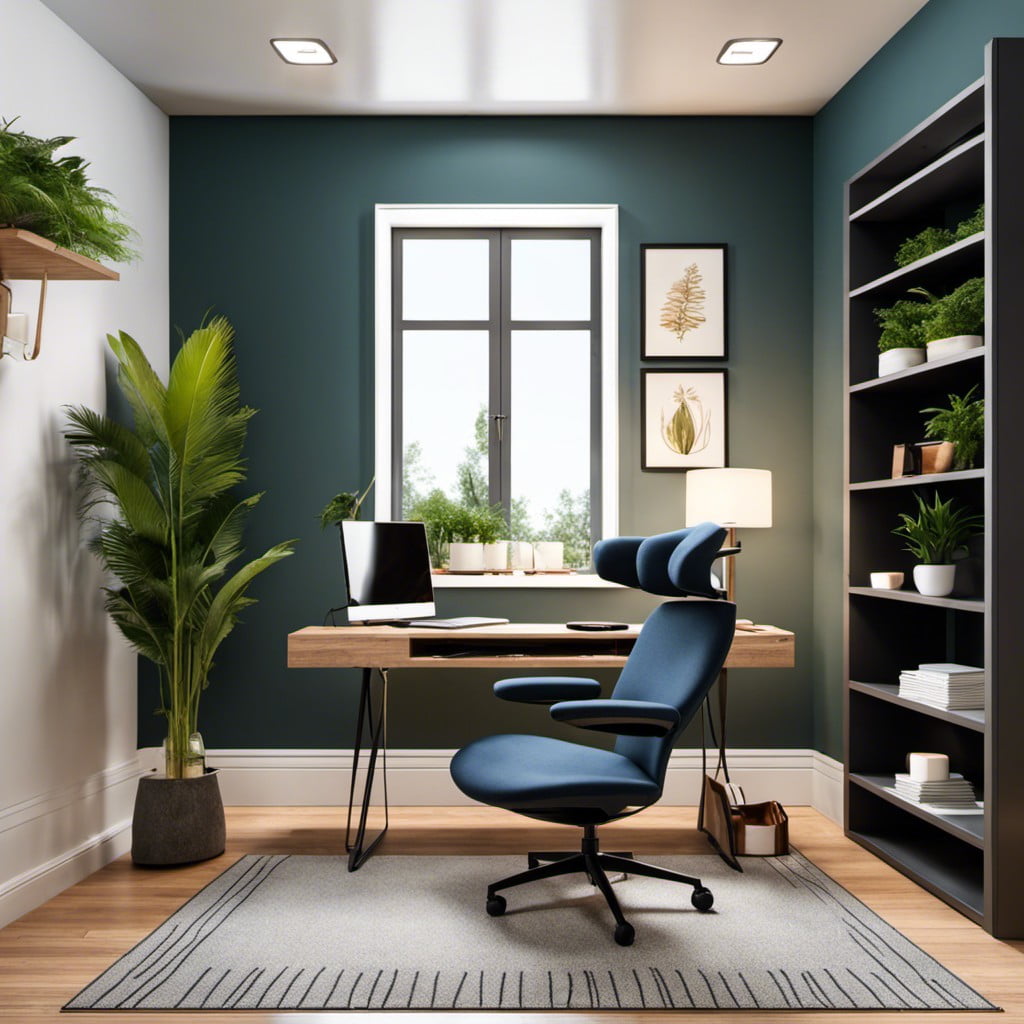
In a therapeutic setting, achieving a state of deep relaxation is of paramount importance. Noise-cancelling headphones can play a vital role in this process. With their ability to block out distracting environmental noises, these devices create an atmosphere conducive to tranquility and introspection.
They can be useful in a variety of scenarios. Firstly, they enable the use of particular relaxation techniques, such as guided meditation or hypnotherapy, by offering an immersive and interruption-free audio experience. Additionally, if the therapy session involves computerized tests or video presentations, these headphones can help the client focus entirely on the task at hand, without distractions.
Moreover, offering such facilities also resonates with the philosophy of utmost care and consideration for the client’s comfort, sending out an appreciative message. When choosing a pair, consider the comfort, sound quality, and the battery life. Wired or wireless models can be selected based on specific requirements. As a bonus, clients who appreciate technology might find this touch impressive and reassuring.
White Noise Machine
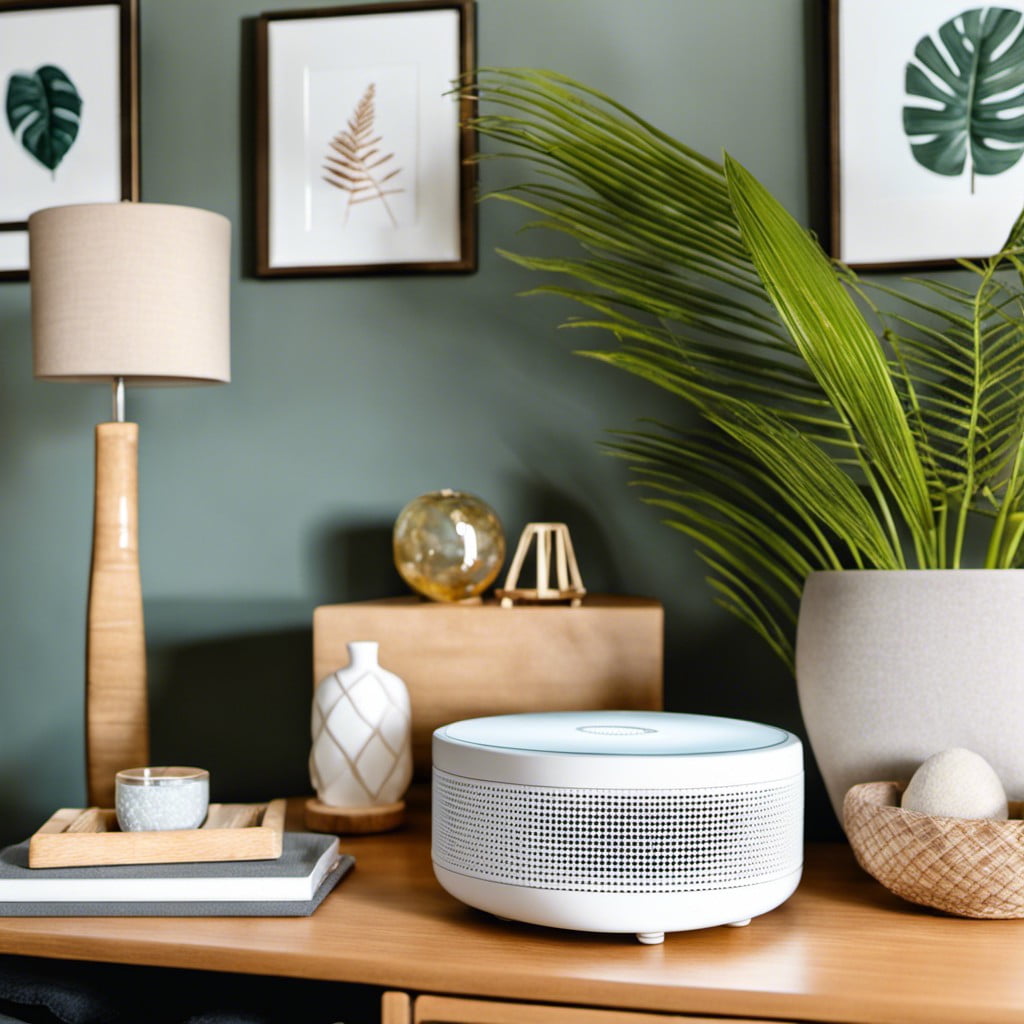
A chief ally in the quest for a peaceful environment, white noise machines can play an essential role. This device drowns out background sounds—traffic, chatter from a waiting room, phones ringing—increasing a sense of privacy, key to a comfortable therapy session.
These come in various types, with some offering nature sounds like rainfall, ocean waves, or forest sounds, fostering an atmosphere of serenity.
Moreover, it can help instil calm and decrease tension during therapy sessions. This focus-enhancing tool can be especially beneficial for those dealing with heightened agitation or hyperactivity.
Placed strategically, it can foster the right conditions for effective therapeutic interactions. Handy, functional, and unobtrusive, it’s the silent facilitator of constructive exchanges that occasionally goes unnoticed but undeniably plays a part in fostering a conducive therapy space.
Natural Elements Like Wood or Stone Accents
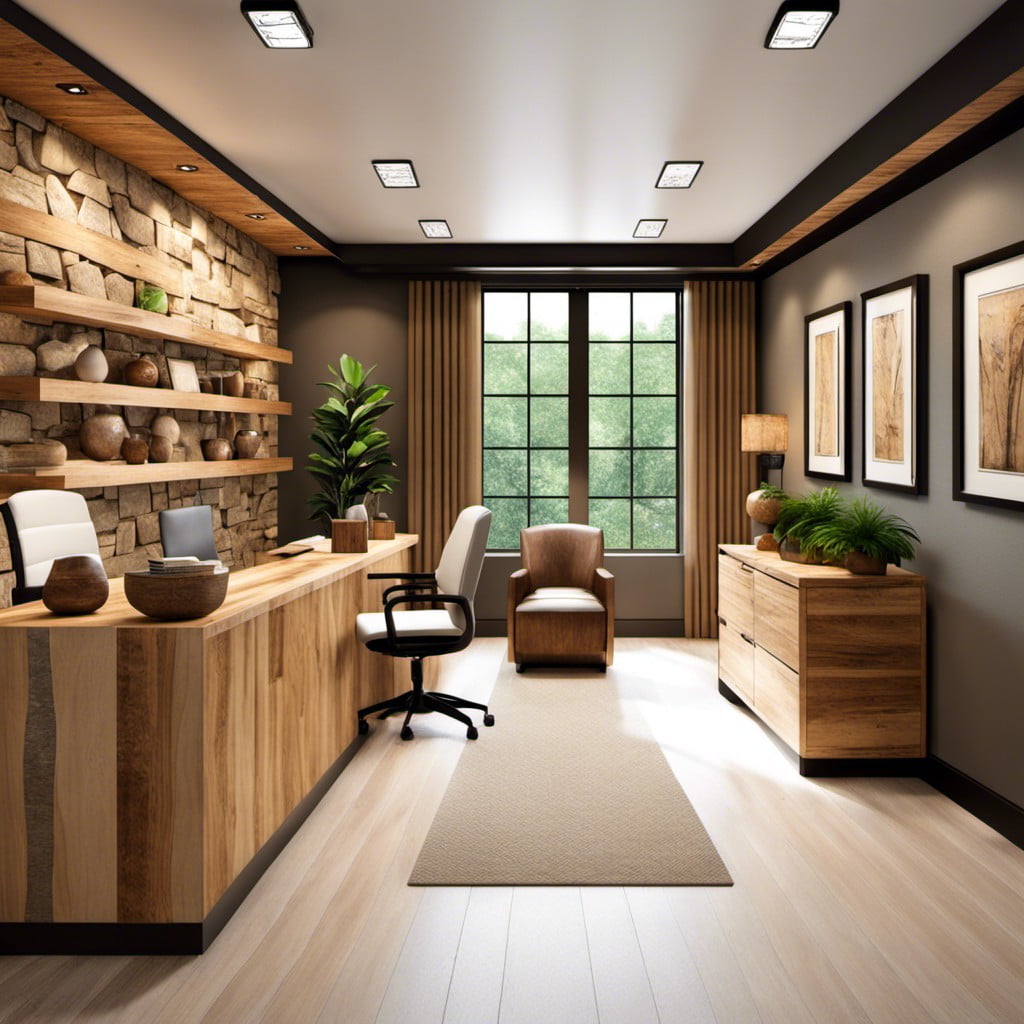
Incorporating natural materials into your therapy office can foster a calming environment. Hardwood finishes carry an inherent warmth that encourages comfort and relaxation. A well-placed wooden bookshelf or desk can evoke feelings of stability and reliability, indirectly reassuring your clients.
Stone accents, on the other hand, are great for their soothing elements. Imagine a slate or marble tabletop catching the light—it’s a subtle reminder of nature’s tranquility. Even small pebble arrangements on your countertop or desk can contribute an organic feel to your office.
It’s worth noting that these elements can also stimulate tactile engagement—some clients may find it helpful to touch or hold a natural object during sessions. But remember, moderation is key. Too much of anything can feel overwhelming. Strive for a balance that complements the rest of your office decor without overpowering it.
Plush Pillows for Couch Comfort
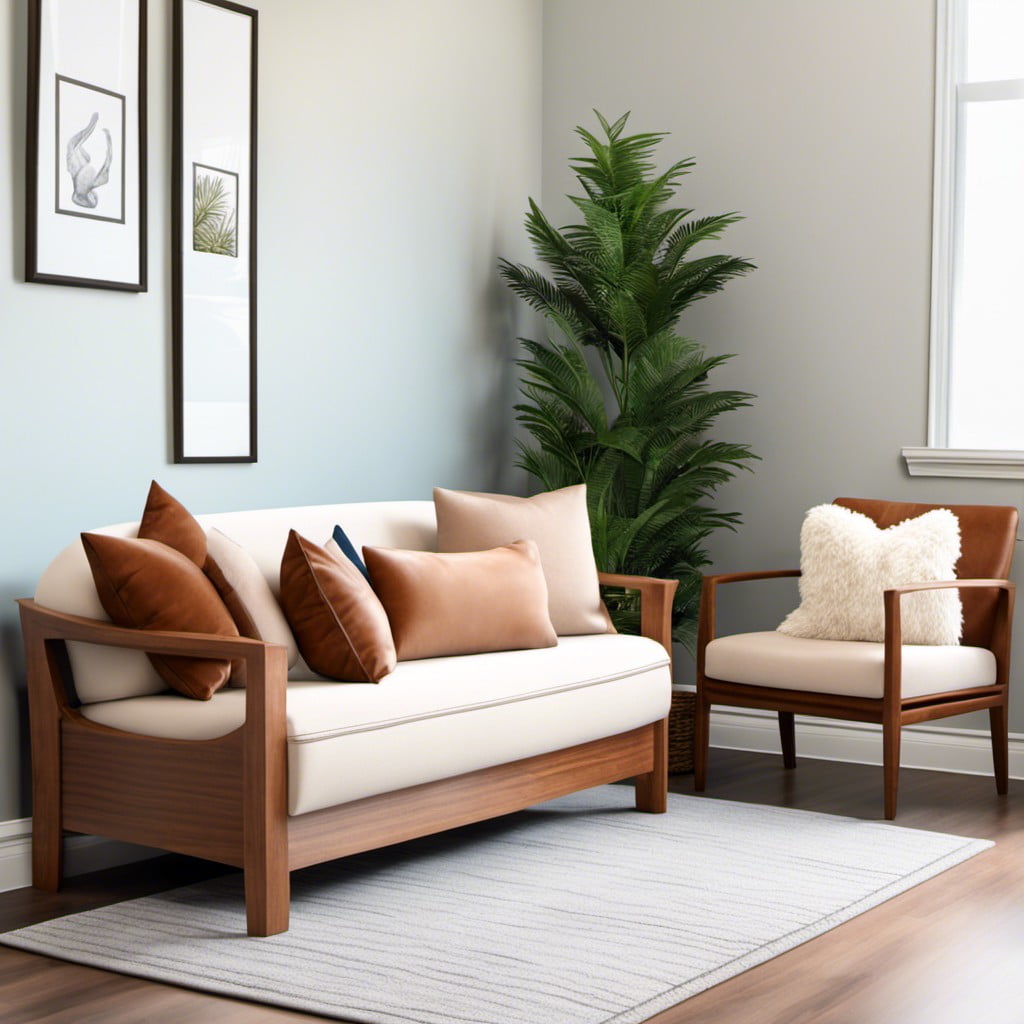
In any therapeutic setting, it’s crucial that clients feel at ease. And nothing signals cozy comfort quite like a luxurious pillow. Choosing the right ones can significantly improve your office’s ambience.
- Complement couch colors: Pillows should enhance the couch’s natural appeal. Select ones that either match or tastefully contrast your couch’s hue.
- Texture is critical: Velvet, faux fur, or corduroy can add a richness and depth to your space that basic cotton might not offer.
- Size and shape matter: Mix and match different forms – standard squares for the foundation, lumbar pillows for lower back support, and smaller, decorative ones for the final flourish.
- Inner fill quality: Opt for high-quality fill like down-feather or memory foam, that bolster comfort and longevity.
- Easy-to-clean: If possible, purchase pillows with removable, washable covers to ensure hygiene and cleanliness are maintained.
In the end, the right pillow selection can turn a therapeutic space into a sanctuary of comfort and calm.
Recap:
